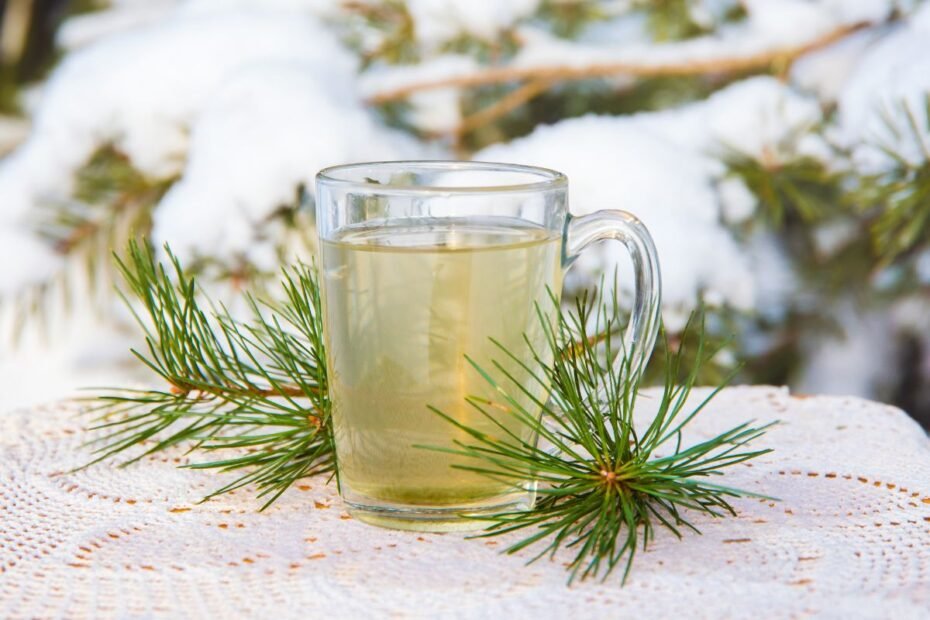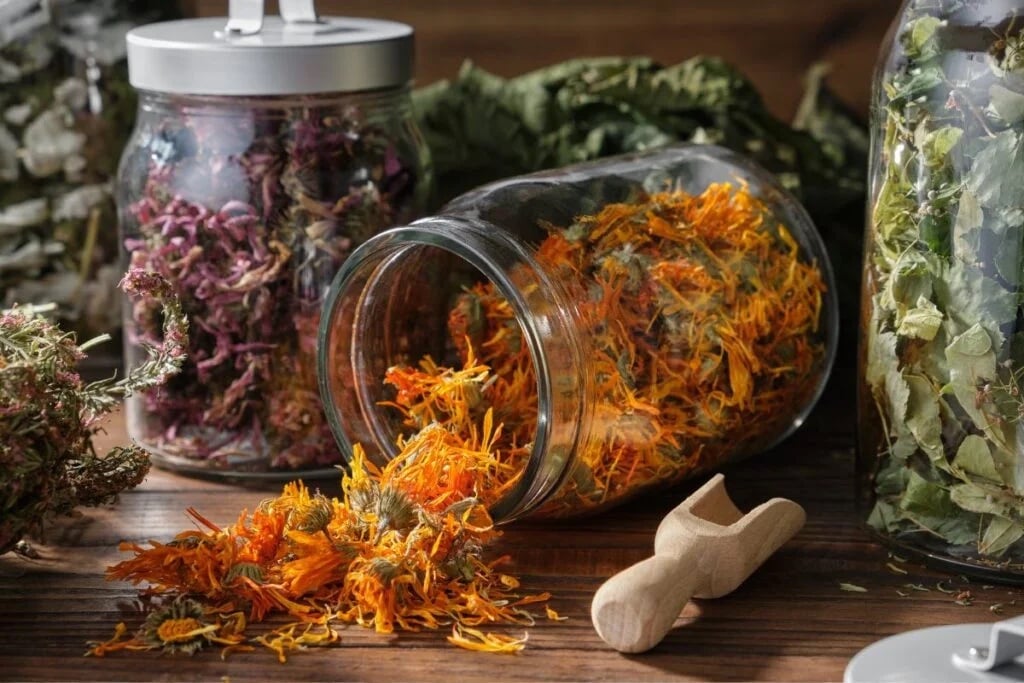Pine bud or pine needle tea is probably nothing new to many people here. But have you ever had spruce or fir needle tea, and juniper berry tea? It’s a good idea to stock up on coniferous raw materials when there are no growing herbs in the winter. This is especially useful when you want to replenish your body with vitamins or help yourself when you have a cough. Conifer tea has other very valuable properties, and it takes no longer to make than your usual favorite tea. Here’s what you need to know about how to harvest and prepare conifers for tea and their benefits.
Which Conifers Can Use for Tea?
Coniferous teas are usually made from needles and sometimes the buds of fir, spruce, and pine trees. The Scots pine (Pinus sylvestris) is quite easy to identify because its thorns are 4–8 cm long, and the branch is surrounded by “bundles” of two. Spruce (Picea) and fir (Abies) have more compact, bushier branches, with short needles densely covering the twigs. The spines of several species of spruce and fir are suitable for making tea, including Norway spruce (P. abies), blue spruce (P. pungens), white spruce (P. glauca), white fir (A. concolor), balsam fir (A. balsamea), and noble fir (A. procera).
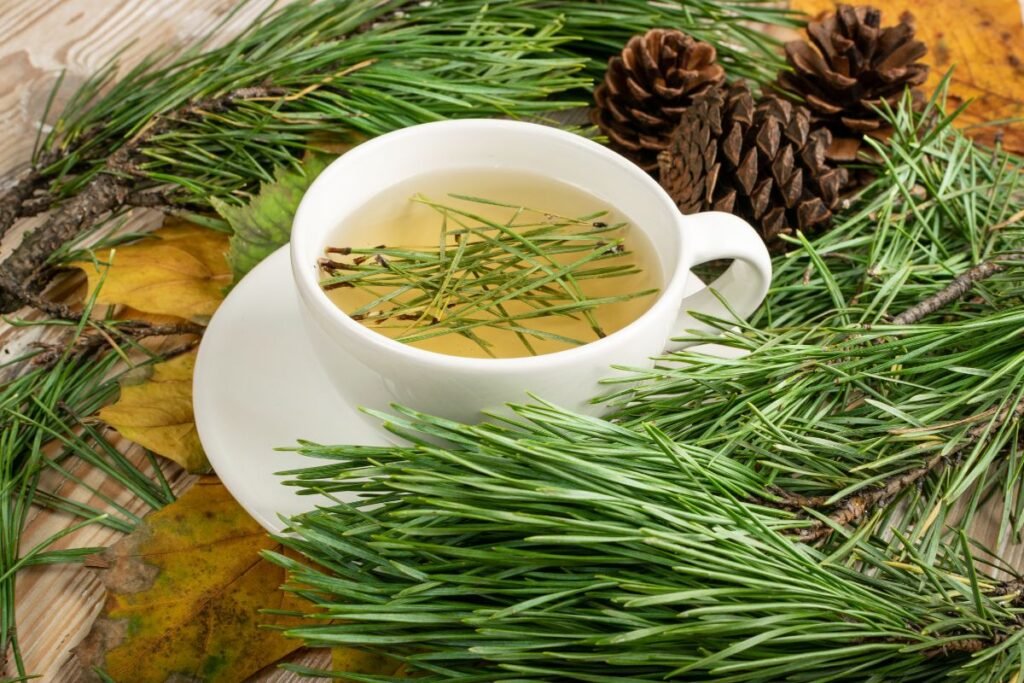
You can also make Juniperus communis tea. But it is typical to need the “berries”—the ripe blue cones—rather than the needles. People drink this tea more often for medicinal purposes. However, a second cup will not harm you unless you have certain contraindications.
The larch (Larix decidua), the Douglas fir (Pseudotsuga menziesii), and the western hemlock (Tsuga heterophylla) are unusual conifers whose needles (according to some foreign sources) you can use for tea. Generally, people brew these teas from the bark and utilize them for various medicinal purposes. Some of them have strong effects, and there is little information about their benefits and other properties. If you want to use these plants for a regular cup of tea, you should take a broader look at the plants and consult your doctor.
Which Conifers Are Not Suitable?
Not all plants with needles are suitable for coniferous tea. Make sure you identify the correct coniferous trees or shrubs. It is relatively easy to do so in some countries because only a few conifer species used for tea grow naturally in forests. Anyway, use some guides to recognize the plants correctly. If you are collecting needles from your backyard or nearby, you should be aware that:
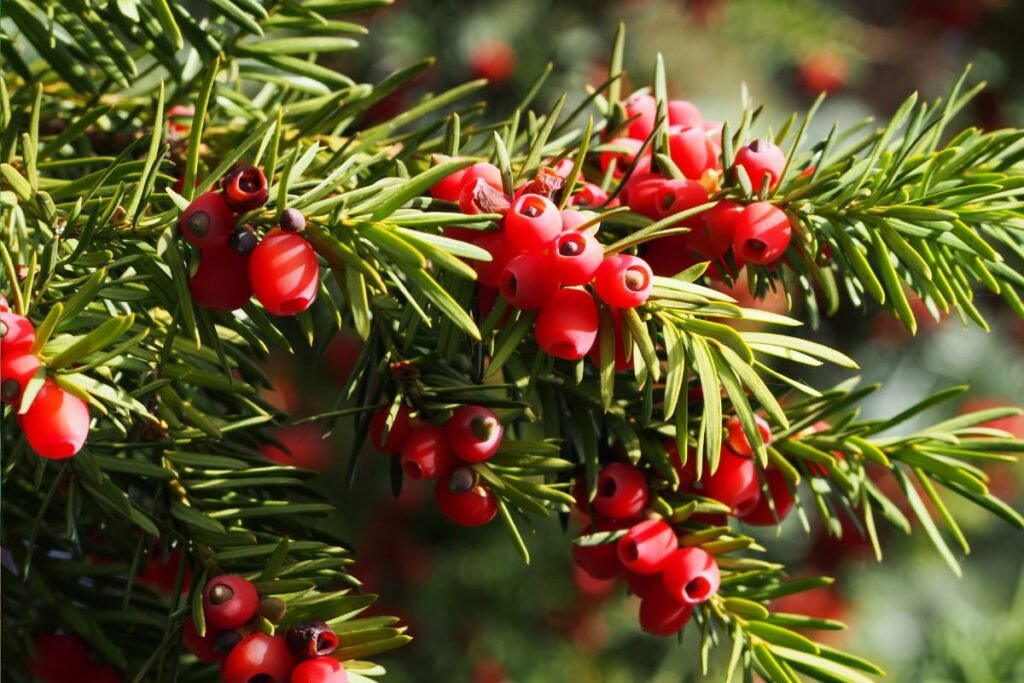
- They can be contaminated. Conifers planted for ornamental purposes in greenhouses collect urban pollution. As well as gardeners often spray pesticides to protect plants from pests and diseases.
- Yew should not be used for tea as it is highly poisonous. It is an evergreen, thorny shrub with twigs resembling those of a spruce or fir but bearing red-orange berries.
- Cedar spines from plantations should also not “appear” in your cup. Many cedar species contain toxic compounds if consumed in large quantities.
- Be careful when making tea from juniper needles. Although some claim that juniper needles are harmless for making tea. However, only a few scientific papers published about the effects of needle tea. The needles have a potent effect on the kidneys and digestive system, like the berries do. If you prefer to use such a tea, do not overdo it, and make sure to consult your doctor.
- If you are too lazy to go outside to collect the thorns and are looking for indoor plants, you will be disappointed. You cannot use the indoor plant Araucaria (an evergreen spiny plant resembling a spruce) either. This plant is slightly poisonous.
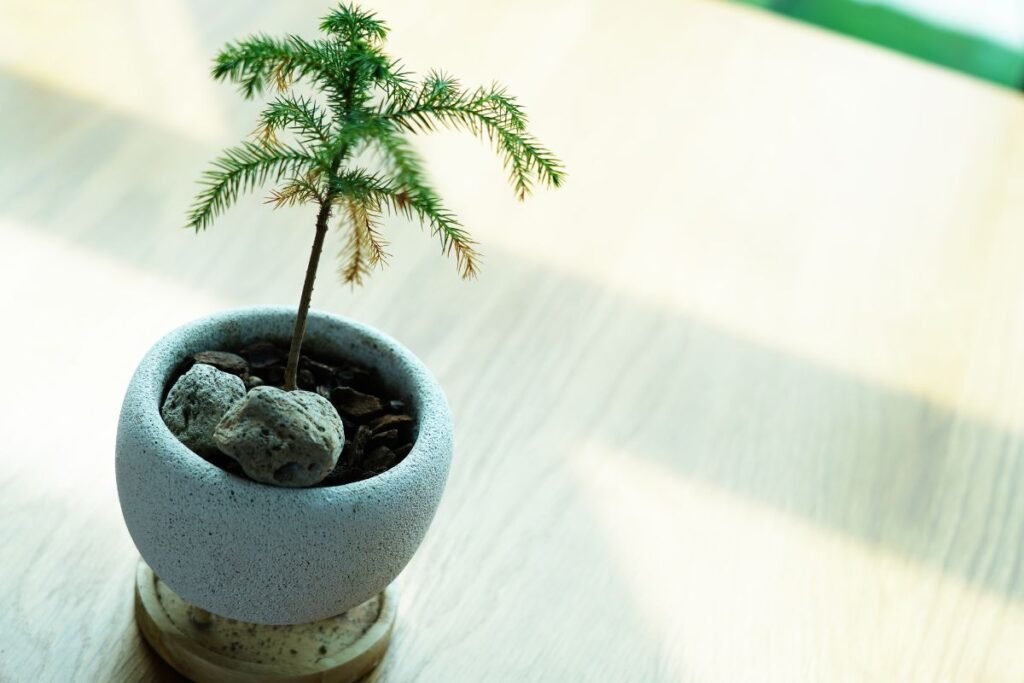
How and When to Collect Raw Materials for Conifer Tea?
Harvest the needles of most conifers all year round. But we usually gather them in the autumn and winter, when other plants are scarce.
Pine buds are collected in early spring (February–March) before they have sprouted and are in their swelling phase. Collect them from old enough trees (at least ten years old) from the lower or lateral branches. Pick the needles in winter without the twigs, wash them, and store them in the snow or a cold room on paper until use.
Spruce and fir needles are collected with twigs. Carefully use scissors to cut small tips a few centimeters long from the branches without tearing or damaging the tree. It is useful to collect soft, green fir or spruce shoots in the spring. Consume sprouts until they are fresh during the week to make spruce shoot tea.
Pick juniper berries in the autumn. However, winter picking until spring is not a bad idea, as the cones do not “disappear” anyway.
Use all the conifer materials fresh or dry them. You also can freeze the juniper berries or conifer shoots.
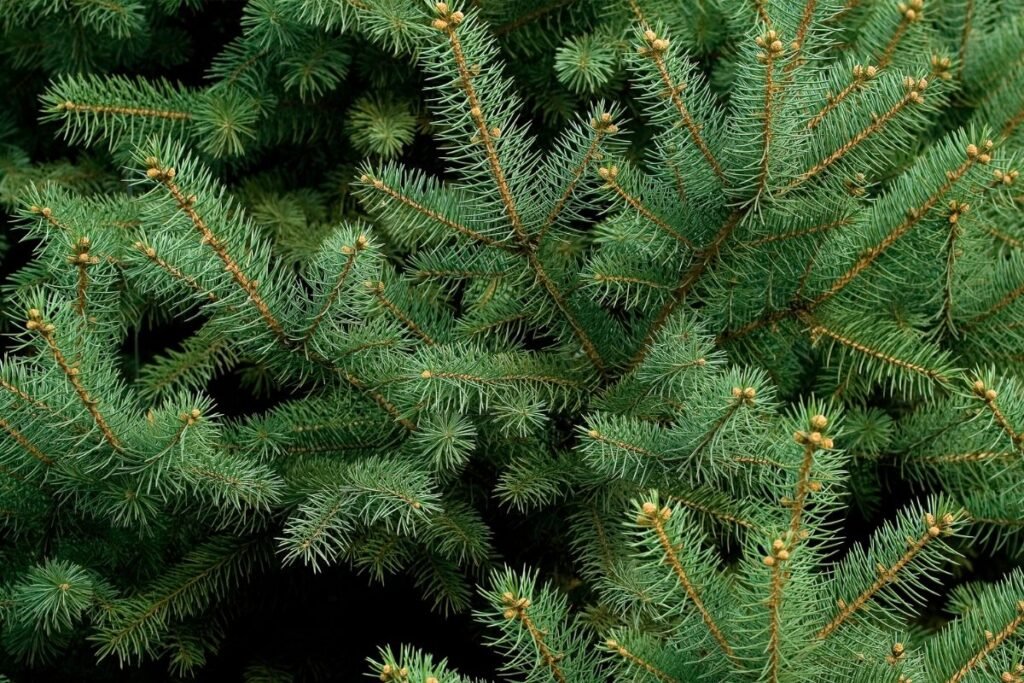
Benefits of Conifer Tea
The aroma of conifer tea alone will make you feel calm and relaxed. Its taste is usually pleasant, with fresh citrus notes.
There are many health benefits of conifer tea. It ranges from relieving pain and stopping aging to treating cold and flu symptoms. Such teas are rich in vitamin C and other antioxidants, in general. These submissions have potent antimicrobial, anticancer, heart-protecting, and immune-modulating effects.
You already know the benefits of pine bud tea, but you should not overlook the pros of other conifers. These drinks are more or less used as cough remedies and respiratory inhalants, as they have disinfectant properties. They stimulate urinary excretion, improve digestion, and treat various inflammatory processes.
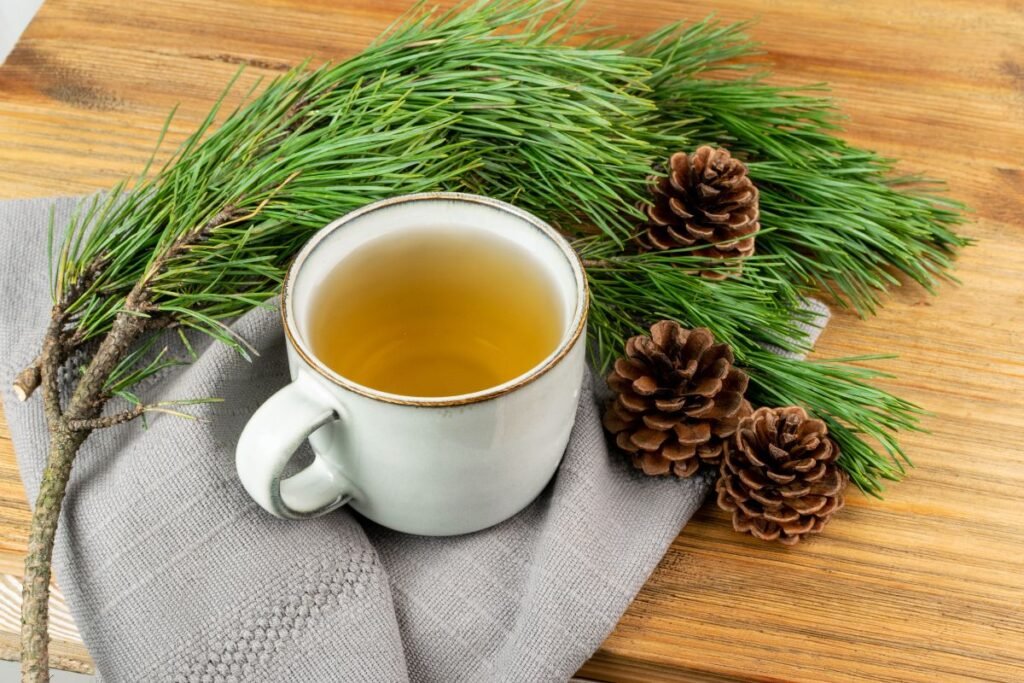
How to Prepare Conifer Tea?
The tea preparation depends on the strength, flavor, and characteristics you want from your conifer tea. You can use the needles for tea with or without the twigs, fresh or dried, whole or crushed. Each will provide its flavor and color, so try several variations. There are also two ways to prepare the tea: boiling the needles or pouring water over them and leaving them to steep. Rinse the thorns well in cold water before you brew the drink.
Method 1: Place a handful of whole or a few tablespoons of crushed needles in a pot. Then pour in two cups of water. Bring to a boil, reduce the heat, and cook for 10 minutes. Leave it to stand for 5 minutes, then strain and drink.
Method 2: Put a small amount of whole needles or one tablespoon of crushed needles in a cup. Pour it with boiling water and leave it to steep for 10 minutes, then strain and drink. If you use crushed needles, you will get the most intense flavor from this method.
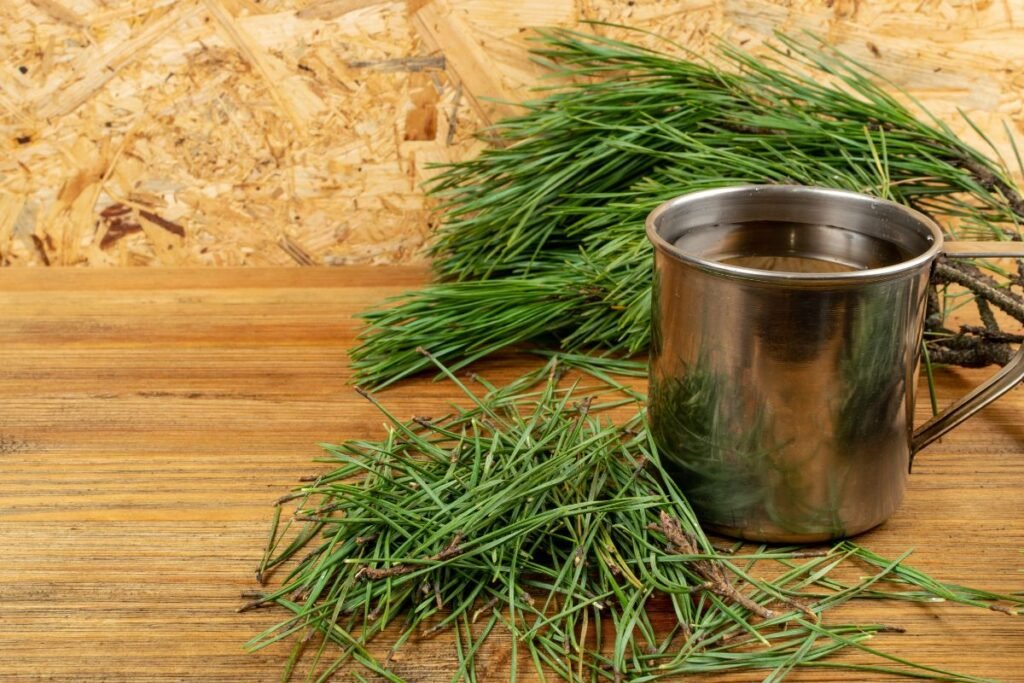
When Is It Not Recommended to Use Conifer Tea?
In any case, you should consult your doctor before taking conifer tea. Some herbs have intense effects and should be evaluated individually. The following main side effects occur:
- Some conifers can interact strongly with diverse medications. For example, juniper berries are in contact with drugs for diabetes and hypoglycemia.
- Pine tea increases blood clotting. It is inappropriate for people with heart insufficiency and some severe kidney, liver, pancreatic, and stomach diseases.
- Juniper berries have a high impact on the kidneys and intestines. Patients with diseases of these organs should avoid it.
- All teas made from conifers are not recommended for pregnant women, as they can cause miscarriage. Breastfeeding women and young children should avoid it either.
Sources:
https://www.growforagecookferment.com/conifer-needle-tea/
https://www.webmd.com/diet/what-to-know-pine-needle-tea
https://arboretumfoundation.org/wp-content/uploads/alexander_edible-conifers.pdf
https://bonsaialchemist.com/learning-center/general-guides/can-you-eat-juniper-needles/
https://www.iscientific.org/wp-content/uploads/2019/09/10-IJCBS-16-09-10.pdf
Associative photos from © Canva.
